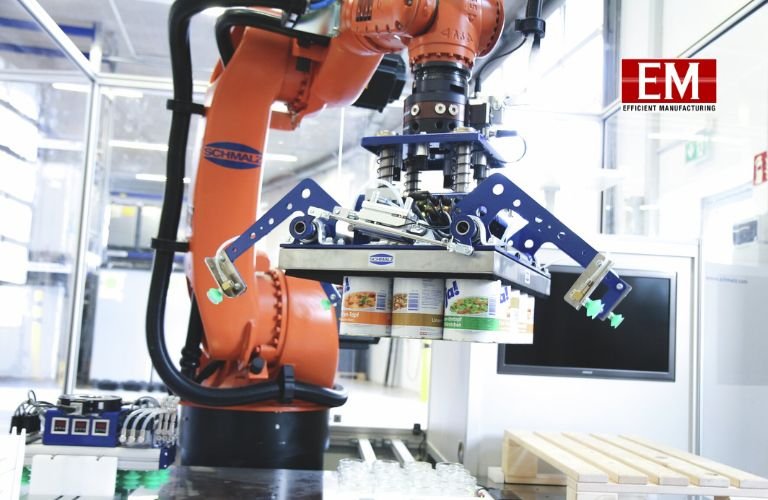| India has firmly established itself as a global pharmaceutical powerhouse over the years. Our pharmaceutical industry has grown by leaps and bounds, evolving into a robust sector that supplies high-quality medicines and vaccines to countries across the globe.
Deepak Pahwa,
Director Delair
In FY23, the Indian pharmaceutical market experienced year-on-year growth of nearly 5%, reaching a total of $49.78 billion. While exports showed a modest 3% increase, the domestic market saw a substantial 7% year-on-year rise. Moreover, according to a report from CareEdge Ratings, the sector is projected to reach $57 billion by FY25.
As the nation continues to enhance its position on the international pharmaceutical stage, it becomes imperative to focus on the often-overlooked yet vital aspect of pharmaceutical manufacturing – compressed air quality.
Compressed air is often referred to as the “fourth utility” in the pharmaceutical manufacturing process, alongside electricity, water and steam. It is an indispensable component that plays multiple roles in the end-to-end pharmaceutical production, from processing to manufacturing to packaging. Some of these roles include:
Pneumatic Application: Pharmaceutical operations involve a myriad of intricate pneumatic processes, such as tablet and capsule manufacturing, ensuring the desired texture, colour, and flavour of tablets, maintaining the right balance of ingredients, and safeguarding products from contamination. Compressed air is the lifeblood that courses through these processes, enabling the creation of high-quality pharmaceuticals that meet rigorous international standards.
Machines & Tools: Compressed air is used to power various tools and equipment, such as automatic packaging machinery, sealing equipment, capsule and powder filling machines, blister pack machines, tablet press & coating machines, drying containers, and vacuum cleaning systems. Any contaminants in the compressed air can lead to product defects and contamination, jeopardising the quality and safety of pharmaceutical products. It also finds application in
Clean Room Operations: In clean rooms, where sterility is paramount, compressed air provides the necessary pressure for laminar flow hoods and isolators. Contaminated air can compromise the entire clean room environment, potentially causing costly production delays and product recalls.
Quality Control: Analytical instruments and lab equipment rely on clean, dry and oil-free compressed air for accurate testing and quality control. Even minute traces of impurities in compressed air can affect the results and consequently, product quality.
Product Contact: In some cases, compressed air comes into direct contact with pharmaceutical products during the manufacturing process. Any contaminants in the compressed air can lead to contamination of the final product, rendering it unsuitable for use.
Moisture is a persistent challenge in the pharmaceutical industry, as it can affect both product quality and machinery. It can be especially deteriorating if even a miniscule amount finds its way into the ‘compressed air line’. It is basically the backbone that supplies all the essential components with compressed air supply. Its cumulative effects inevitably lead to not only a shorter shelf life for pharmaceutical products, but also be responsible for making them ineffective, even counter-active. The consequences of moisture contamination include:
Product Deterioration: Moisture can lead to issues such as tablet disintegration, lumping, caking, uneven coating, and decomposition of formulations. For hygroscopic pharmaceutical products, even minimal moisture presence can cause physical, microbiological, enzymatic, and biochemical deterioration.
Tablet Compression: The pernicious impact of moisture is most evident in tablet compression. During this process, powdered materials are compacted into capsules or tablets under high pressure. Excess humidity not only causes tablets to crumble but also initiates drug decomposition, diminishing their medicinal efficacy. Even during tablet coating, inadequate moisture control can lead to rough, translucent coatings that fail to meet quality standards.
Microbial Growth: Excessive moisture fosters the growth of harmful microorganisms. Airborne mould, mildew, and fungi find a fertile breeding ground in the presence of suitable temperature and humidity conditions. Microbial growth accelerates material decomposition, weakening the integrity of the product.
Packaging Concerns: It is imperative to recognize that moisture’s detrimental impact extends beyond the manufacturing stage to packaging. Therefore, addressing moisture-related issues must be a priority at every stage of the product cycle, from production to packaging.
Effect on Tools: Moisture doesn’t spare pneumatic tools and machines either. High humidity levels lead to corrosion in pipelines, cylinders, and other components, resulting in equipment malfunctions. Sluggish and inconsistent performance of pneumatic valves and cylinders can be attributed to excess moisture. When moisture freezes in cold weather, it exacerbates these issues, leading to increased downtime and maintenance costs for companies.
To safeguard consumers and produce cost-effective, safe drugs, manufacturers must ensure that compressed air is free from contaminants such as water/moisture, dust particles, oil and solid impurities. Moisture, in particular, must be eliminated to prevent these destructive consequences.
To achieve the highest standards of compressed air quality, it is imperative to install efficient compressed air dryers in the manufacturing and packaging units across various pharmaceutical processes. With a wide array of refrigeration and desiccant/ adsorption dryers, Delair’s Compressed Air Treatment solutions offer a comprehensive solution. While the refrigeration and desiccant dryers employ distinct drying principles, both their ultimate goal is to remove moisture from compressed air. The choice between them depends on the specific requirements of each process.
For processes necessitating a pressure dew point between 3°C and 4°C, refrigeration dryers are employed. These dryers cool the air to nearly freezing temperatures, effectively eliminating moisture. Conversely, when exceptionally dry air with an atmospheric dew point of (-40)°C to (-60)°C is required, adsorption or desiccant drying is applied. This method employs the principle of heatless regeneration, deploying desiccants to adsorb and desorb water vapours. It leverages the pressure swing principle and purges air to rejuvenate the desiccant bed.
In essence, compressed air-drying systems serve as the crucial framework ensuring compliance with pharmaceutical air quality standards. They play a pivotal role in eliminating any form of contaminants present in compressed air, not only contributing to the production of high-quality finished products but also ensuring the optimal performance of pneumatic machinery. This not only adds value to a company’s revenue but also upholds the industry’s reputation for quality and compliance with stringent standards, including those set by the Food and Drug Administration (FDA). As India continues to strive for pharmaceutical supremacy on the international stage, the role of quality compressed air in maintaining product excellence cannot be overstated.








